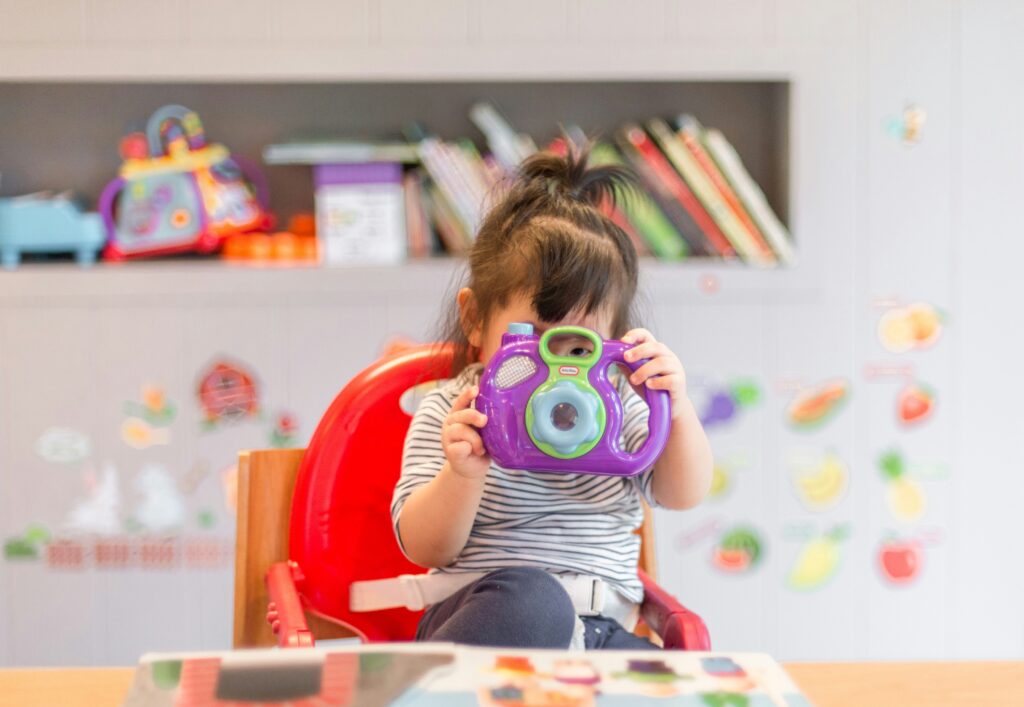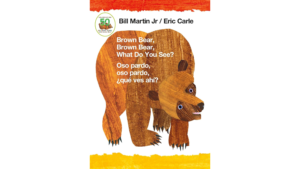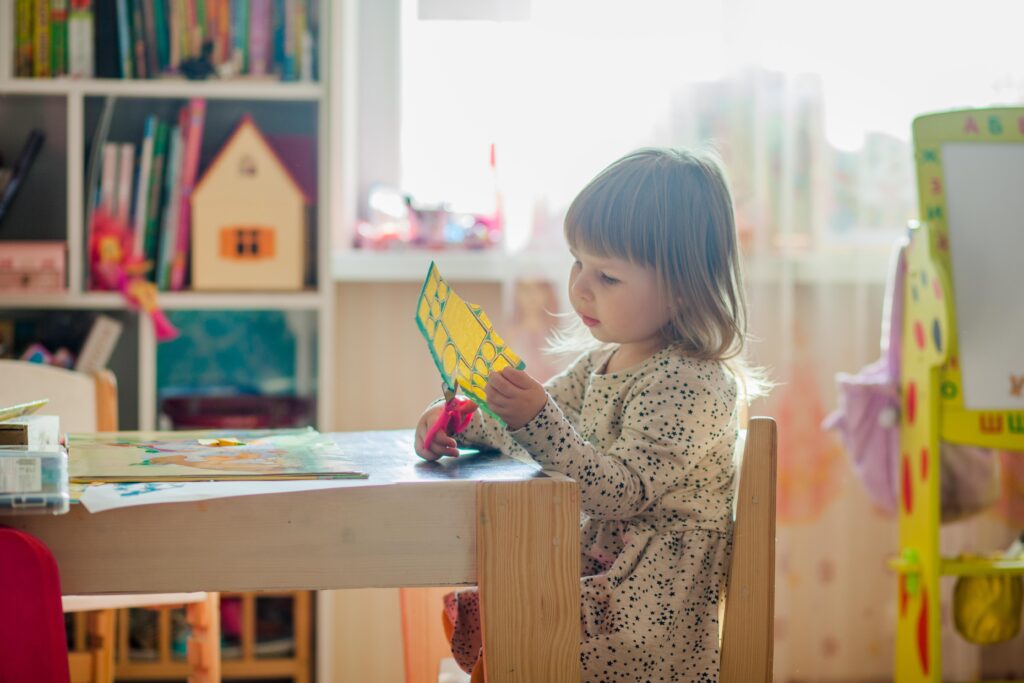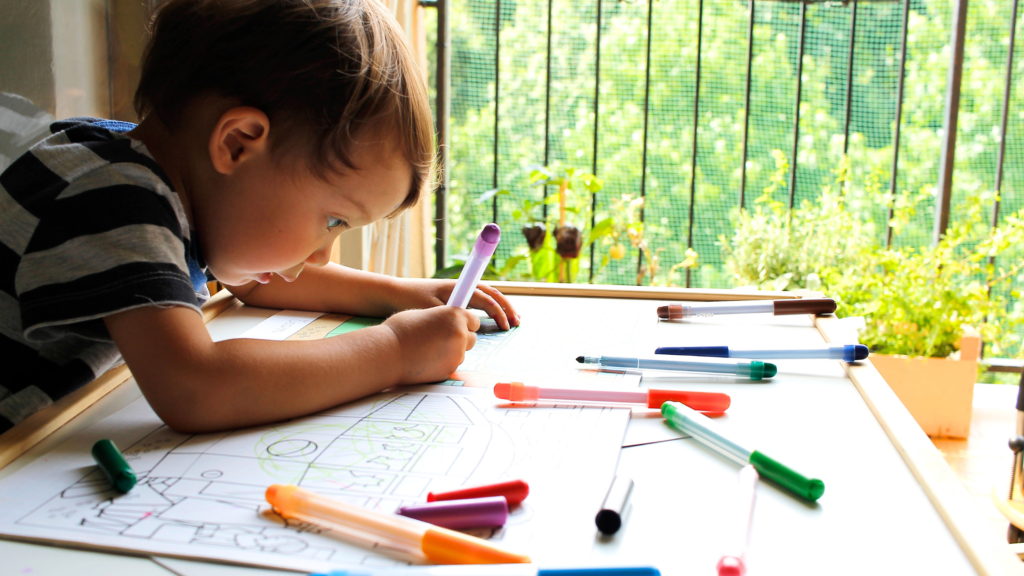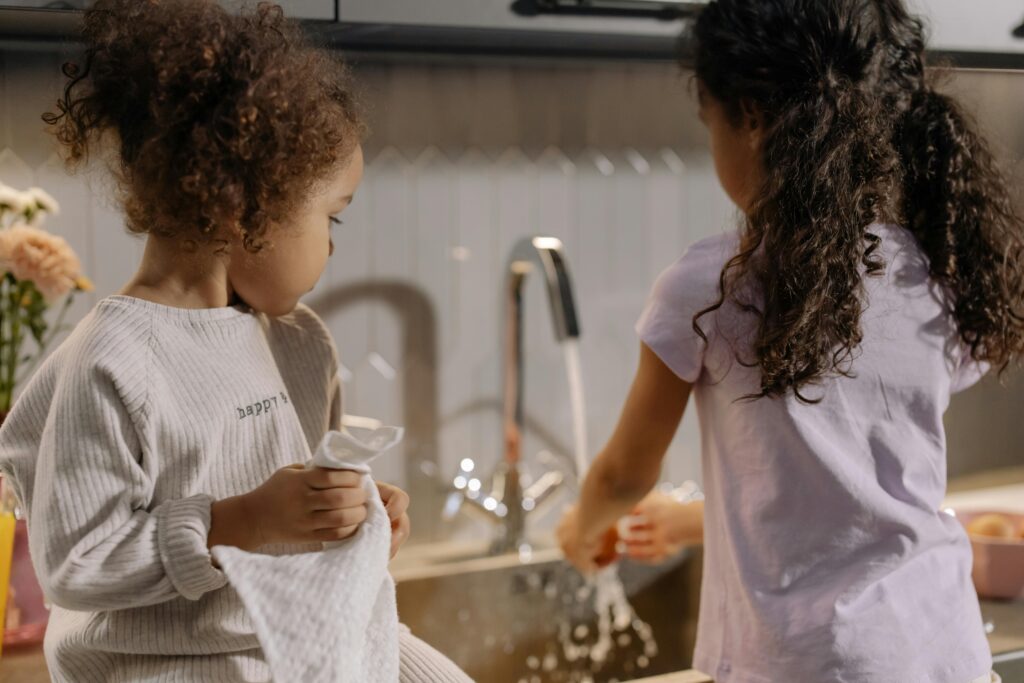Let me start by saying. Thank you for stopping by!
You are about to learn how EASY it is to raise a child to understand two languages and that teaching them to speak two languages is obtainable.
Disclaimer: This is intended for the parents of a Kindergarten or younger-age child.
If you have an older child which you would like for them to learn the second language you speak, it will require a different approach and possibly more of a formal teaching strategy.
Here are some Resources to get started: DuoLingo & DinoLingo
The Backstory of this post.
If you were to have a conversation with either of my children, yes even the 2-year-old, you will find yourself either speaking in English or conversing in Spanish.
My children understand and speak both languages and I cannot say anything out loud around my 8 and 7 year old in either language they will not understand. I have to whisper, spell it out quickly or expect my husband to read my lips.
( If you can picture that scene ).
When our oldest was just months old, my husband suggested we teach all our children to speak Spanish. He shared the idea of having children that could communicate with our Spanish-only-speaking parents. At first, I didn’t see the importance of it, English is the country’s primary language, why would they need it? I thought.
But looking back now, I realize what I would have missed out on by them simply knowing the language that bridged the family together.
My husband explained that our nephews and niece did not know Spanish and pointed out the difficult conversations they had with their grandparents. It was either grandma mispronouncing a word in English or grandkids having to point at a random object in the room to get their idea across to Grandma.
The AHA Moment!

The AHA moment came when I once tried to spark conversation with a stranger at the time who I thought knew Spanish only to realize they didn’t know a single drop of Spanish, BUT it was their grandparent’s first language.
If I was going to have my children communicate with my mother, mother-in-law, and father-in-law, I had to be the one to teach them.
As a Homeschool mom. I spend lots of time with my children on a daily basis and one of the things my husband and I eventually agreed on was to ONLY speak Spanish to each other.
Now…. some background on MY Spanish speaking abilities….
I am not terrible, but I am not great either.
Speaking to my husband’s side of the family was discouraging at first (they live in Mexico), prior to this I thought my Spanish speaking abilities were awesome, but already having agreed with the hubby to speak only Spanish in front of our first daughter I got past my shyness.
Sometimes we would both forget and would talk English in front of her, but as soon as someone remembered we would quickly switch it back.
With consistent repetition, we first trained ourselves to speak without hesitation.
So how do you get started?
Anything around you will serve as an influence. Sometimes beneficial and sometimes not.
It’s essential to be intentional in the way you are teaching
1. Family in your daily circle
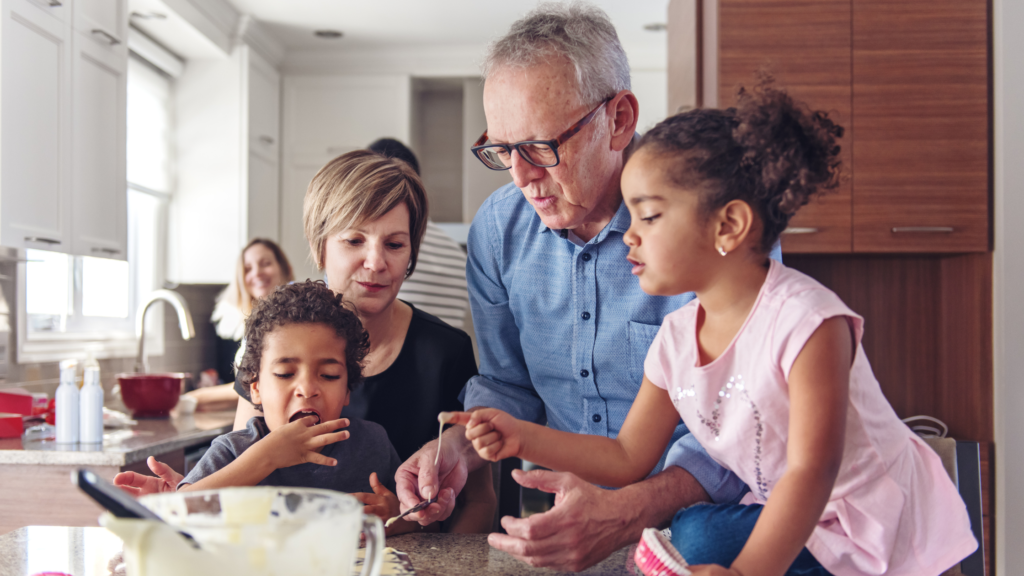
Who your child interacts with daily will make a big difference. If possible, have everyone on the same page to talk to your child in a certain language.
You will decide how often they will practice. Ideally, you want it to be more of a lifestyle than anything else.
How we do it:
We chose to ONLY speak Spanish in our household. Anytime we are together at home and anytime we are together at church we will speak Spanish to each other. Our children are also not allowed to talk in English, they must talk in Spanish with one another, even during playtime.
The times we speak English to them is when we teach a certain subject during our “school” time at home. And when we are in a conversation with an English-speaking person in which our child is part of the conversation
2. Movies/ Shows & Music
Allowing too much screen time for your child is not recommended, research shows it hinders attention span and would be counterproductive when reading books to young children.
Go ahead and put on some 2nd language tunes, youtube is filled with a good variety of songs for babies, toddlers, and older children.
Showing bilingual shows to your toddler and older child can be beneficial when showing them in moderation of course, if your choice of 2nd language is Spanish. Check Out one of the Youtube Videos we showed our littles when they were first learning their Numbers. I like this one because it’s short and straight to the point.
-
- Bilingual Books – such as Oso Pardo, Oso Pardo, Que ves Ahi? / Brown Bear, Brown Bear, What do you see?
This is probably the easiest in this list of considerations.
Choosing books that will encourage your child (even from the young age of 6 months) to begin to learn that for every English word that exists, there must be a Spanish word for it (or any language of your choice).
Here are a couple of books we have used and/or currently use in our home.
How we do it:
We first read the story in Spanish and then read it in English. You can also point out objects in the books and tell your child the name in both languages.
Soon their curiosity will have them ask for names of random items and they will be learning so much more effortlessly.
3. Social Interactions

This is fundamental.
If you are not close to family or part of a community that would encourage your child to put their 2nd language into practice then take them somewhere they can put it into practice.
For most of us, the 2nd language is a native language so interacting with other children that speak the 2nd language and socializing with aunt, uncle, grandma, and grandpa will be easier and it’s super important!
How we do it;
Our children are homeschooled. All their social interactions are either family or church family. We are blessed to have a rich community of Spanish and English-speaking children and adults they can converse with every day.
Consider taking them to a Chinese restaurant, or Indian kitchen for lunch and assist them in making their order for their lunch.
4. Curriculum/Course
If you are new to the idea of homeschooling a child starting from the early years of life, then visit this informative post I shared telling you my recommendation on how, when, and with what to use to get started with.
How to Start Homeschooling Preschoolers
You can choose to enroll your child in a course/take a class to learn everything needed to start speaking the 2nd language.
How we do it:
We choose everyday life with intentional teaching to shape our children’s language.
STAY IN TOUCH to receive more Bilingual Homeschool tips!
I do not send spam.
Learn Piano for FREE!
Hoffman Academy is an online piano school that teaches kids and adults of all ages! And goes at your pace.
You DO NOT need to know an ounce of music to introduce this to your children and the benefits this will provide your family will be immense.
Music not only brings color to life but, it plays a big part in child development.
- Improved mood and better emotional regulation
- Better physical endurance
- Early language development skills
- Increased patience and discipline
- Improved memory and retention
- Better concentration
- Fine motor skills
- Improved sense of self worth and better overall self esteem
- Better test scores on standardized tests
So Sign Up today with a Free Account and feel free to explore around Hoffman Academy website.


